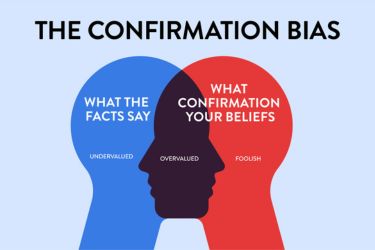Many of us have found ourselves sticking with choices, behaviours, or beliefs, even after we know they are not working or no longer make sense. This happens more often than we think, whether it is keeping a subscription we never use or defending an unpopular opinion. The commitment cognitive bias describes our tendency to stay loyal to past decisions or actions, even in the face of negative consequences or new information that suggests we should change course.

When we are committed to something, it often feels uncomfortable to admit we were wrong or to start over. This bias can affect our decisions at work, at home, and in relationships. If we can recognise how the commitment bias works, we can learn to make better, more flexible decisions in the future.
Key Takeaways
- We often stick with choices, even when they are clearly not working.
- The commitment bias can have a powerful impact on our decisions and behaviours.
- Noticing this bias is the first step to making better choices.
What Is The Commitment Cognitive Bias?

The commitment cognitive bias affects the way we make decisions and react to new information. It often leads us to stay with previous actions even when changing course would be a smarter choice.
Definition and Key Concepts
Commitment bias is a cognitive bias where we continue to support our original decisions, beliefs, or actions, even after learning those choices may be wrong. We tend to justify past behaviour, even when there is clear evidence that a different approach would be better.
This bias is sometimes called escalation of commitment. For instance, we may keep investing money or time into a project that is failing simply because we’ve already put so much into it. The bias makes us focus more on past costs rather than future benefits.
The concept links closely to the idea of sunk costs. When past investments (time, effort, money) start to limit our willingness to change decisions, commitment bias is often at play.
Commitment and Consistency Bias Explained
Commitment and consistency bias is another name for this tendency. Our minds like to be consistent with what we have previously said or done. Once we make a public commitment or take an action, we feel social and internal pressure to stay consistent—even if circumstances change.
Consistent behaviour can be useful, but this bias becomes a problem when it leads us to make poor choices just to avoid appearing inconsistent. For example, we may keep supporting a position in a group discussion, even after realising the facts no longer support it, just because we want to seem reliable or trustworthy.
When we act out of a need for consistency, it affects not just our decisions but also our interactions with others. Advertisers and politicians often use this bias to encourage loyalty and repeat behaviour.
Differentiating Commitment Bias From Other Cognitive Biases
While commitment bias shares features with other biases, it is different in several ways. For example, the sunk cost fallacy is about the influence of past investments, while commitment bias is broader, involving the need to stick with past actions or beliefs for the sake of consistency.
Commitment bias also differs from confirmation bias, which is our tendency to seek out evidence that supports our current views. Commitment bias keeps us in the same course mostly due to our own sense of consistency, whereas confirmation bias is about how we handle information.
Understanding these differences helps us recognise when our choices are influenced by a desire for consistency and commitment, rather than by careful, rational thinking. Recognising the bias allows us to make better decisions and avoid wasting resources out of habit.
Psychological Mechanisms Behind Commitment Bias

Commitment bias is shaped by how we seek to be consistent in our actions, justify our decisions, and align our choices with personal values. These psychological needs can strongly influence our behaviour and thinking patterns.
Role of Consistency in Thought and Behaviour
We often feel a need to be consistent in what we think, say, and do. This drive for consistency leads us to repeat past choices and stick with our first decisions, even if evidence suggests we should change. People usually want to appear stable and reliable to others and themselves.
This tendency can be seen when we publicly commit to something, such as an opinion or a plan. Once a commitment is made, even if circumstances change, we may continue along the same path simply to maintain consistency. The desire to avoid looking indecisive or unpredictable helps explain why commitment bias occurs.
Examples of this can include:
- Sticking to a club or group we joined even after losing interest
- Continuing a project that is no longer useful just because we started it
Cognitive Dissonance and Self-Justification
Cognitive dissonance happens when our actions conflict with our beliefs or values. This inner discomfort pushes us to resolve the difference, often by justifying our past actions instead of admitting a mistake. We convince ourselves that our choices were reasonable, even if evidence shows otherwise.
Self-justification is a strong force behind commitment bias. Instead of changing direction, we create reasons to explain why we should remain committed. This way, we reduce the uncomfortable feeling that comes from realising our initial decision was flawed.
For instance, if we invest money or time in something unsuccessful, we may double down instead of walking away. We try to prove to ourselves and others that our original choice was correct.
Influence of Values and Identity
Our personal values and sense of identity play a key role in commitment bias. When we view a decision as part of who we are, we are more likely to stand by it. If a choice reflects an important value, such as loyalty or perseverance, we may ignore new information and stay committed.
Being consistent with our identity makes us feel more confident and principled. This is especially true when our choices are public or linked to a social group. Changing our mind could seem like betraying our values or letting others down.
As a result, our desire to see ourselves as good, dependable people can trap us in commitments that no longer serve us.
Escalation of Commitment and Decision-Making Consequences

When we experience commitment bias, we may feel pressure to continue a decision or project even when it is failing. This can lead to wasted resources, poor choices, and negative outcomes for both individuals and organisations.
Escalation of Commitment in Practice
Escalation of commitment happens when we invest more time, money, or effort into a choice, even after it has shown disappointing results. For example, a business might keep funding a struggling project because admitting failure feels too costly or embarrassing.
We often see this bias in large organisations, where decisions are made in public and reversing them may damage someone’s reputation. The more we speak about or defend our previous decisions, the harder it becomes to change direction.
Typical situations include staying in a job that does not fit, continuing bad financial investments, or holding onto weak business strategies. These choices are frequently influenced by a desire for consistency and a reluctance to appear wrong.
Sunk Cost Effects and Persistence
The sunk cost effect is closely related to escalation of commitment. When we have already spent money or effort on something, we tend to keep going simply to avoid “wasting” past investments. This is true even if new information shows that the current path is unlikely to succeed.
Examples include continuing to develop a product that has little market interest or putting additional resources into a failing advertising campaign. The logic behind these decisions is flawed, because past costs cannot be recovered, no matter what we do next.
By recognising sunk cost effects, we can better evaluate each situation based on current and future prospects rather than past commitments. This allows us to make decisions that are more rational and less influenced by previous investments.
Decision-Making Errors
Escalation of commitment can lead to several decision-making errors. We may ignore negative feedback, justify our actions with selective reasoning, or rely on hope rather than evidence. These errors make it harder to stop unproductive behaviour or change course when it is necessary.
Common errors include:
- Dismissing critical feedback
- Overestimating possible future gains
- Avoiding responsibility for past decisions
- Relying on outdated information
These errors introduce risks for both individuals and organisations. Making systematic evaluations, encouraging openness, and creating environments where changing one’s mind is accepted can help reduce decision-making mistakes linked to commitment bias.
Real-World Applications and Examples

Commitment bias, sometimes called commitment and consistency bias, shows up in everyday actions, workplace decisions, and even in the way businesses influence our choices. This bias can drive us to stay with choices or activities we once committed to, even if they end up being unwise.
Commitment Bias in Personal Life
In our personal lives, commitment bias can affect relationships, routines, and habits. We might stay in a friendship or partnership that no longer brings happiness simply because we've invested time and energy.
This form of bias also appears when we hold on to expensive hobbies, unfinished projects, or even beliefs that no longer serve us. The idea of sunk costs—the time or money already spent—makes it harder for us to change direction.
Examples:
- Staying with a gym membership we've stopped using, thinking the money we've already paid will be wasted otherwise.
- Holding onto outdated electronics because we've already invested in them, even if better options exist.
Behavioural Impacts in Organisations
Within organisations, commitment and consistency bias often surfaces in project management and leadership. For instance, managers may continue funding failing projects to justify previous investments, even when evidence suggests stopping would be wiser.
Teams might press ahead with plans that are outdated or ineffective, fearing that changing course could look like poor judgement. This need to appear consistent can suppress valuable new ideas and reduce productivity.
Common organisational impacts:
- Continuing with unsuccessful product launches.
- Refusing to adapt company strategies after public commitments.
- Leaders avoiding course corrections to protect their reputations.
Having open discussions about mistakes and encouraging flexibility can help counter these negative effects.
Marketing and Persuasion Tactics
Marketers and salespeople often take advantage of commitment bias to persuade customers. Once we agree to a small request or free trial, we're more likely to stick with a service or make a purchase later.
Businesses may use loyalty programmes or public testimonials to deepen customers’ commitment. By getting us to make initial small commitments, they increase the chance of future, larger commitments.
Examples in marketing:
- "Foot-in-the-door" technique—getting us to agree to something small first.
- Subscription services offering low-cost trial periods that lead to ongoing payments.
- Reward points schemes that encourage us to keep buying to not lose previous rewards.
Overcoming The Commitment Cognitive Bias
To manage the commitment cognitive bias, we need to spot when it happens and use reliable methods to make better choices. By increasing our awareness and adopting practical strategies, we can reduce the hold of consistency urges on our decision-making.
Recognising Signs of Bias
The commitment cognitive bias often shows when we continue with choices even if they no longer make sense. If we justify sticking with a bad decision simply because we made a promise or have already invested time or resources, this is a key warning sign.
We should notice when we use phrases like “I’ve already started, so I must finish,” or “I can’t quit now.” These thoughts reveal that we may be valuing our desire for consistency over sound judgement.
Watching for emotional cues also helps. If we feel uneasy or defensive about changing our minds, it could signal cognitive dissonance—a common source of commitment bias. Keeping track of past decisions and reviewing why we stand by them helps us spot patterns and avoid automatic behaviour.
Strategies for Objective Decision-Making
To think more clearly, we can use a few specific strategies. One useful method is to focus on present facts, not past investments. We can make a habit of asking, “If I had no previous commitment, would I still choose this?” This resets our mindset and helps us weigh options objectively.
Seeking feedback from others adds a layer of objectivity. Group discussions or trusted advisers can offer fresh perspectives and point out when we might be acting out of habit or pride.
We can also set clear criteria for success or failure before making commitments. This allows us to judge decisions by results, not by how much time or energy we have already invested.
Regularly reviewing our decisions against written goals helps to disrupt bias and anchor our thinking in clear principles instead of emotional loyalty or sunk costs.
Frequently Asked Questions
Commitment bias often causes us to stick with our initial decisions, even if new evidence shows they might be wrong. It is shaped by psychological mechanisms, our desire for consistency, and can be reinforced by other biases such as confirmation bias.
What are typical examples of escalation of commitment in decision-making?
Common cases include managers continuing to fund failing projects or individuals staying in unfulfilling jobs because they have already invested time or resources. We may also see escalation of commitment when someone keeps using a certain strategy, despite repeated evidence that it is not effective. These examples show how difficult it can be for us to change course once committed.
How does commitment bias differ from the sunk cost fallacy?
Commitment bias makes us want to remain loyal to our decisions or beliefs, even when faced with negative results. The sunk cost fallacy, however, is when we factor in past investments, such as money or effort, when deciding to continue an activity, instead of focusing on future consequences. While both involve sticking with an initial path, the sunk cost fallacy is specifically about not wanting to "waste" what has already been spent.
What psychological mechanisms underpin the escalation of commitment bias?
Escalation of commitment is fuelled by our need to appear consistent and avoid regret. Cognitive dissonance plays a major role, as we strive to reduce the discomfort caused by conflict between our actions and new evidence. We may also fear looking indecisive in the eyes of others.
In what ways can confirmation bias reinforce commitment bias in judgements?
Confirmation bias leads us to search for, interpret, and recall information that supports our existing beliefs. This bias can make commitment bias stronger because we ignore or downplay evidence against our choice. As a result, we become even more entrenched in our original position and less likely to change our mind.
How can one recognise and mitigate the impact of commitment bias in professional settings?
We can recognise commitment bias when we notice decisions being justified mainly by past effort or public statements, rather than by current evidence. To mitigate its effects, it is helpful to seek outside opinions, use objective data, and encourage open discussion about whether to continue, change, or stop a course of action.
What definition is commonly used to explain commitment bias in the context of cognitive psychology?
Commitment bias is usually defined as the tendency to remain committed to a past decision, belief, or behaviour, even when it is clear that the outcome is negative or better alternatives exist. In cognitive psychology, it is seen as a mental shortcut that helps us avoid the discomfort of admitting mistakes, but often leads to poor judgement.

















